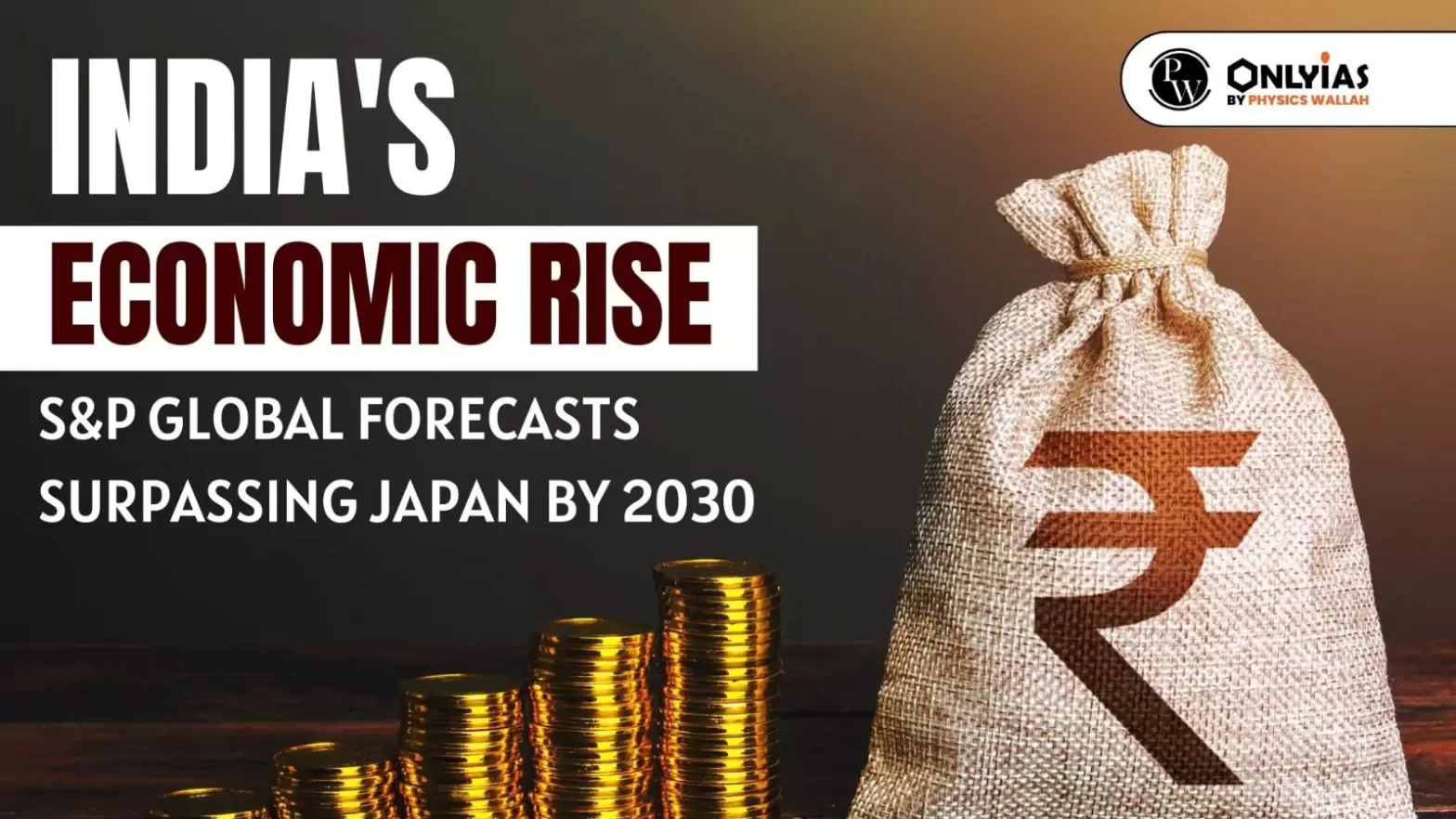Context: As per the S&P Global Market Intelligence’s recent report, India will surpass Japan to become the second largest economy in terms of GDP in the Asia-Pacific region by 2030.

About S&P Global:
|
Gross Value Added:
|
|---|
| Must Read | |
| NCERT Notes For UPSC | UPSC Daily Current Affairs |
| UPSC Blogs | UPSC Daily Editorials |
| Daily Current Affairs Quiz | Daily Main Answer Writing |
| UPSC Mains Previous Year Papers | UPSC Test Series 2024 |
GDP, or Gross Domestic Product, measures the total value of goods and services produced within a country, providing a vital overview of economic health.
S&P Global offers financial information, credit ratings, benchmarks, and analytics in global markets, including divisions like S&P Global Market Intelligence and S&P Global Ratings.
GVA (Gross Value Added) calculates national income from the supply side, representing the value added across sectors. GDP = GVA + Taxes - Subsidies.
India transitioned to GVA at basic prices for more accurate economic performance reflection, abandoning GDP at factor cost.
The decline was due to a rise in the agricultural sector (3.7%) but a drop in manufacturing, reduced demand, and low government spending.
Maharashtra, Tamil Nadu, Karnataka, Uttar Pradesh, with Maharashtra's GDP estimated at USD 824.51 billion, and Tamil Nadu's at USD 650.34 billion.
India's economy is predicted to grow between 6.0-6.8% in the fiscal year 2023-24.
India aims to raise manufacturing to 25% of GDP from the current 17.7% as a part of its economic strategy.

<div class="new-fform">
</div>